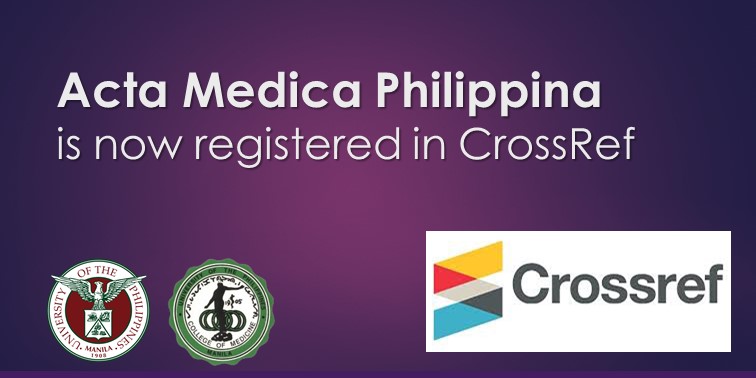Periodontal Status of Filipino Older Adults in the Focused Interventions for FRAIL Older Adults Research and Development Program (FITforFRAIL): A Cross-sectional Study
DOI:
https://doi.org/10.47895/amp.vi0.7630Keywords:
geriatrics, aged, periodontal diseases, prevalence, PhilippinesAbstract
Introduction and Objective. Periodontitis is highly prevalent worldwide, and previous investigations have reported increased prevalence and severity among elderly. Regular monitoring of dental health, which includes periodontal conditions, has been recommended by the Philippine Department of Health, as basis for the development and updating of policies and laws that will address the public health problem of periodontal disease among the ageing Filipino population. Therefore, this present study aimed to determine the prevalence and severity of periodontal disease among Filipino older adults who participated in the Focused Interventions for Frail Older Adults Research and Development Program (FITforFRAIL) study.
Methods. This study on the periodontal status of Filipino older adults is a cross-sectional substudy of the FITforFRAIL research of the Institute on Aging, National Institutes of Health, University of the Philippines Manila. Participants aged ? 60 years were from four identified geographical regions in the Philippines. Three hundred sixteen completed oral health assessment, which included full mouth periodontal recording, and 183 participants were eligible for inclusion in the periodontal component. Periodontal diagnoses were determined using the Centers for Disease Control-American Academy of Periodontology (CDC-AAP) case definitions for surveillance of periodontitis and the 2018 European Federation of Periodontology (EFP)/AAP classification. Descriptive statistics (frequency, percentage, and mean) were used to report the sociodemographic characteristics and periodontal diagnoses of the participants. The clinical periodontal measures used to indicate the extent and severity of periodontitis were presented as mean [standard error (SE)] or percentage (SE).
Results. Using the CDC/AAP case definitions, majority (97.3%) were diagnosed with periodontitis, with 33.3% having severe periodontal destruction. On the other hand, based on the 2018 EFP/AAP classification, all participants had periodontitis and most (94.5%) presented with severe disease. Moreover, using the latter classification system, the percentage of severe periodontitis was observed to increase with age. Among the young-old, 93.1% had severe disease, while 94.1% of the middle-old and 100% of the oldest-old were found to have severe destruction.
Conclusions. Based on the results of the study, the prevalence of total and severe periodontitis is high
among this sample of Filipino older adults. Future studies for regular monitoring of the oral health of Filipino older adults are recommended.




.jpg)



